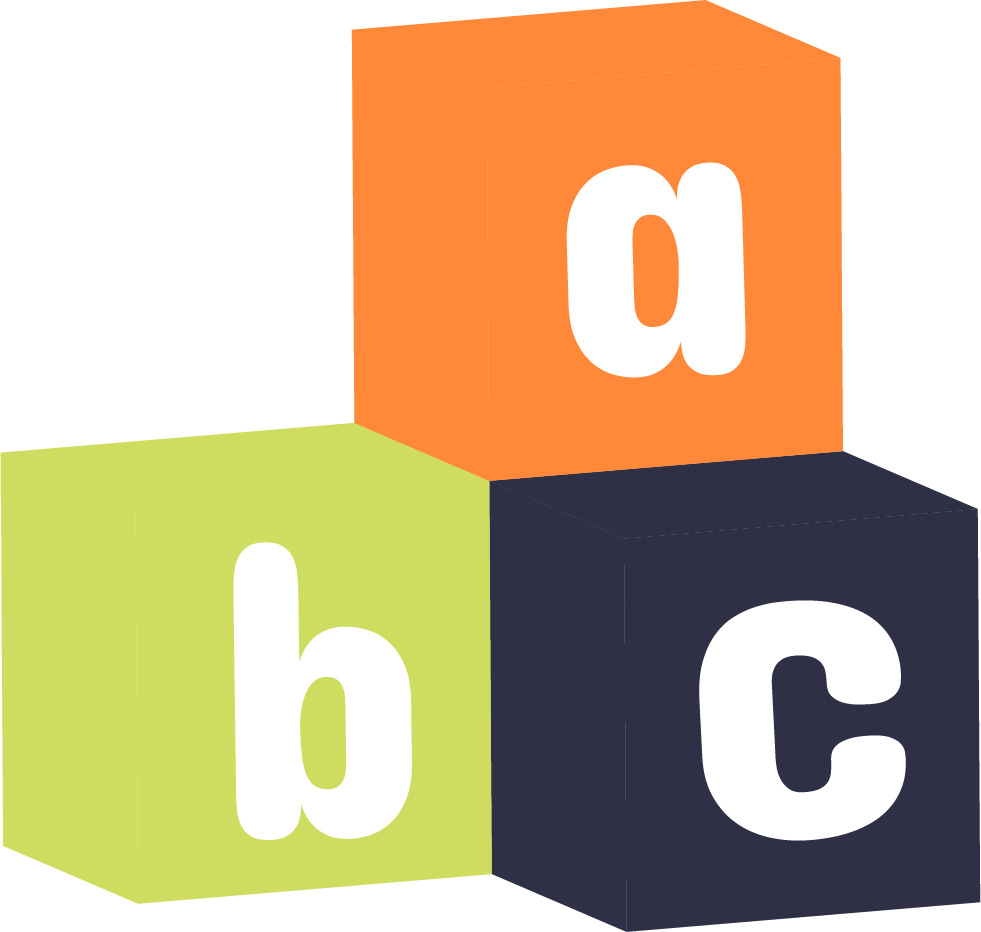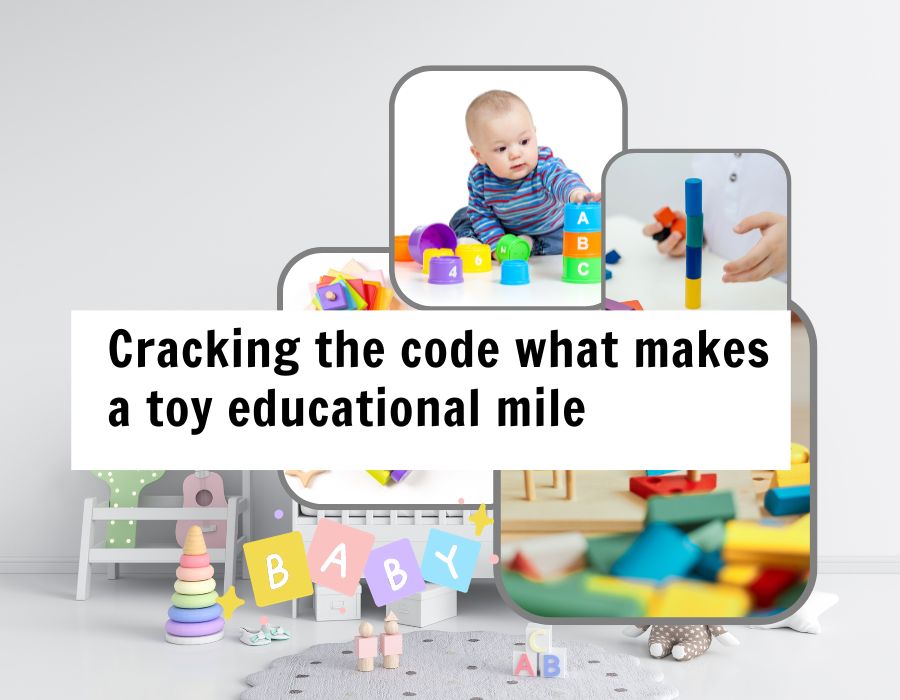Cracking the code what makes a toy educational
In the vibrant realm of childhood development, the synergy between play and learning is undeniable. Educational toys emerge as pivotal tools in shaping young minds, seamlessly blending enjoyment with cognitive, emotional, and social growth. This article delves into the nuanced elements that elevate a mere toy to the status of a powerful educational asset.
Educational toys transcend the conventional, designed with a purpose beyond mere amusement. Crafted deliberately to foster intellectual growth, these toys become agents of engagement, sparking a unique blend of play and learning.
Distinguishing Educational Toys from Regular Toys
Toys play a pivotal role in shaping a child’s personality, and while they may seem purely for enjoyment, especially in the case of conventional toys, their impact goes beyond mere fun and games. This disparity becomes evident when we consider the realm of educational toys, a category offered by Camtec Kids Specialist, where the influence on a child’s development is notably more positive. Unlike their conventional counterparts, educational toys are purposefully crafted to instigate learning in children. Their primary objective is to enhance and develop children’s skills or teach them specific subjects, thereby serving as catalysts for intellectual growth.
The fundamental distinction between normal and educational toys lies in their intended use. Regular toys are designed solely for children’s entertainment, lacking a specific intention to teach or educate. These toys often feature natural objects without a deliberate design to stimulate or develop any particular skill. In contrast, educational toys, also known as instructive toys, are explicitly created to facilitate learning, instruction, intelligence development, and improvement in social, emotional, and physical skills.
>>> Understanding what is language development in infants
During the early years of child development, functional play takes precedence. When children engage with educational toys, they tend to play with them repetitively, boosting their confidence and fostering a willingness to try new things. The educational toys provided by Camtec Kids Specialist are designed not only to make the learning process enjoyable but also to enhance problem-solving skills, particularly through activities involving shapes and building blocks.

Learning Cause and Effect
An essential concept that educational toys impart to children is the cause and effect relationship. These toys help children understand that every action elicits a reaction. When multiplayer educational toys are introduced, children not only develop social skills by involving their peers in the game but also cultivate a competitive spirit, teaching them resilience in the face of minor setbacks later in life.
Fostering Imagination and Creativity
Educational toys are instrumental in fostering imagination and creativity in children’s minds. These toys encourage children to develop innovative ideas to accomplish tasks, skills that prove invaluable in dealing with real-life challenges as they grow older. The multifaceted benefits of playing with toys are precisely why Camtec Kids Specialist stands out as a leading wholesaler of educational toys in Singapore.
If you’re wondering where to purchase educational toys for your children, the e-commerce site of Camtec Kids Specialist is the ultimate destination. Here, you’ll discover educational toys tailored for all age groups and covering a diverse range of subjects, from chemistry and physics to economics and ecology. The extensive selection ensures that your children can enhance their skills in any chosen subject through engaging and educational play.
Cognitive Development in Play
As gateways to cognitive growth, educational toys offer an immersive experience in critical thinking. Through puzzles, games, and interactive activities, they contribute to the development of memory retention and spatial awareness. These toys, therefore, become more than playthings; they are cognitive catalysts.
Motor Skills and Educational Play
The educational journey extends beyond mental realms to the physical domain. Educational toys play a significant role in refining both fine and gross motor skills. Activities requiring manipulation contribute to enhanced coordination, setting the stage for future physical achievements.
>>> Unveiling the concerns and importance of educational toys for Educational Toys
Emotional and Social Learning
Educational toys transcend individual growth, becoming instruments for emotional and social learning. Beyond the joy of play, these toys foster empathy, teach social cues, and encourage cooperation through shared experiences. They serve as stepping stones to robust interpersonal skills, preparing children for the complexities of social interaction.
Features of Educational Toys
Cracking the code involves discerning distinctive features that distinguish educational toys. These may encompass interactivity, age-appropriate challenges, and a deliberate focus on specific skill development. It is in these features that the efficacy of an educational toy lies – engaging a child on multiple levels for a comprehensive developmental experience.
The Impact on Learning
The impact of educational toys on learning outcomes is profound. By presenting educational concepts within a playful context, these toys facilitate absorption of knowledge in an entertaining manner. This approach creates positive associations with learning, nurturing a lifelong love for exploration and discovery.

Contemporary Varieties of Educational Toys
Determining the best educational toys for your child hinges on their unique interests and imagination, emphasizing that the most beneficial toys are those that resonate with your child. While preferences may vary, there are distinct types of educational toys, each offering diverse learning opportunities. These include sensory toys, movement toys, construction toys, apps and electronic toys, and open-ended toys.
Sensory Toys
Sensory play involves activities that engage one or more of a child’s senses, aiding in processing information about their surroundings and how things function. Sensory toys manifest in various forms, ranging from silk scarves to slime, musical instruments to wooden rockers. These toys enrich a child’s sensory experiences, fostering a deeper understanding of their environment.
Movement Toys
As the name suggests, movement toys encourage physical activity in children. This category encompasses a variety of items such as balance boards, skipping ropes, footballs, and indoor slides. By promoting movement, these toys contribute to enhancing a child’s sense of balance, spatial awareness, and overall body confidence.
Construction Toys
Toys that allow children to build and create are exceptional tools for learning. Construction toys, whether building blocks or intricate sets, cultivate creative thinking, problem-solving skills, and stimulate imagination. The process of assembling and constructing fosters a range of cognitive benefits.
>>> Exploring early learning educational toys for children
Apps & Electronic Toys
In the contemporary landscape of educational play, learning apps and electronic toys have emerged as innovative tools. These digital resources, when used judiciously, can offer engaging learning experiences. While some parents may prefer screen-free play, apps and electronic toys can be a valuable addition to a child’s play opportunities.
Open-Ended Toys
Among the most favored types of play is open-ended play. Open-ended toys provide limitless possibilities for children to learn, imagine, create, and develop new skills. Defined by their versatility, open-ended toys can be used in multiple ways, limited only by a child’s imagination. Examples include wooden balance boards, offering endless opportunities for exploration.
As you delve into the realm of educational toys, you might be surprised by the variety already present in your collection. At Capikooa, we celebrate the simplicity of learning through play, emphasizing that the journey doesn’t have to be complex. Beauty lies in the diverse and enriching opportunities that educational toys bring to a child’s developmental journey.

Choosing the Right Educational Toys
Selecting the right educational toys demands a thoughtful approach. Parents and educators must consider the age appropriateness of the toy, ensuring alignment with the child’s developmental stage. Striking an optimal balance between challenge and accessibility guarantees an engaging and constructive educational journey.

Real-world examples underscore the transformative effects of educational toys. From language development to improved problem-solving abilities, these case studies provide tangible evidence of the benefits derived from a play-based educational approach. These stories serve as powerful testimonials to the efficacy of educational toys in shaping a child’s developmental trajectory.
The essence of educational toys lies not merely in their capacity for amusement but in their ability to shape and mold young minds. Recognizing the features that make a toy truly educational empowers parents and educators to make informed choices, enriching the educational journey of every child through the power of play. With detailed article above, revealing a path to holistic and engaging learning experiences for the next generation.

